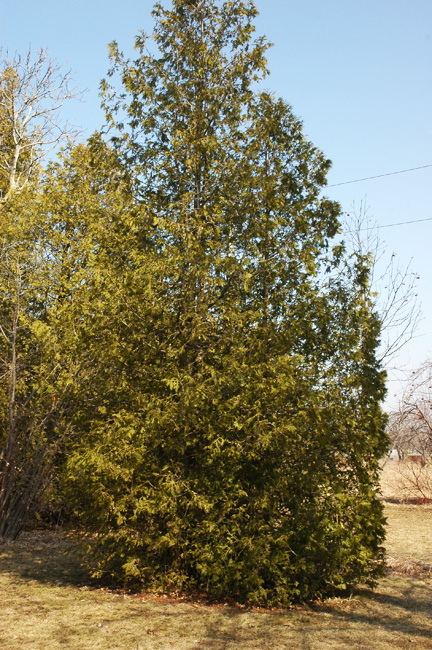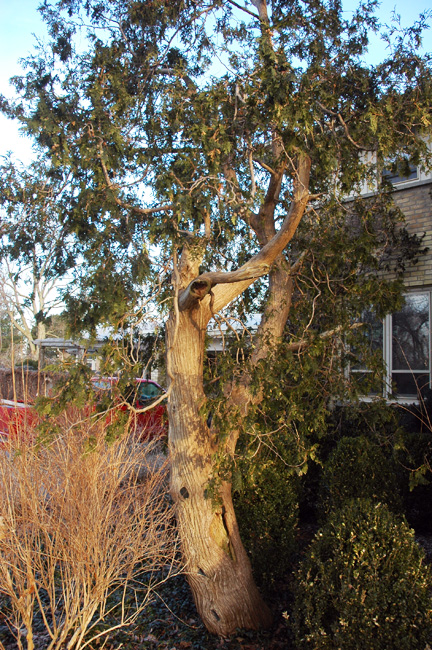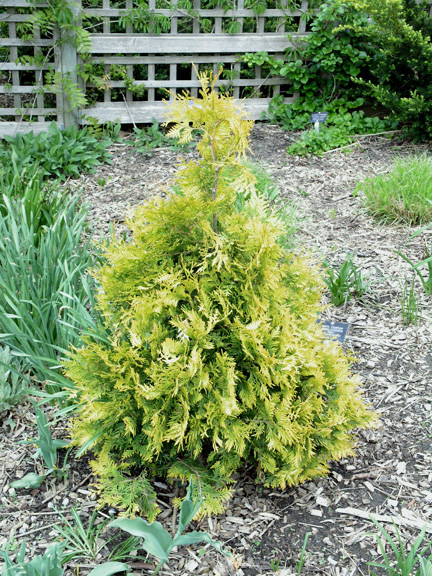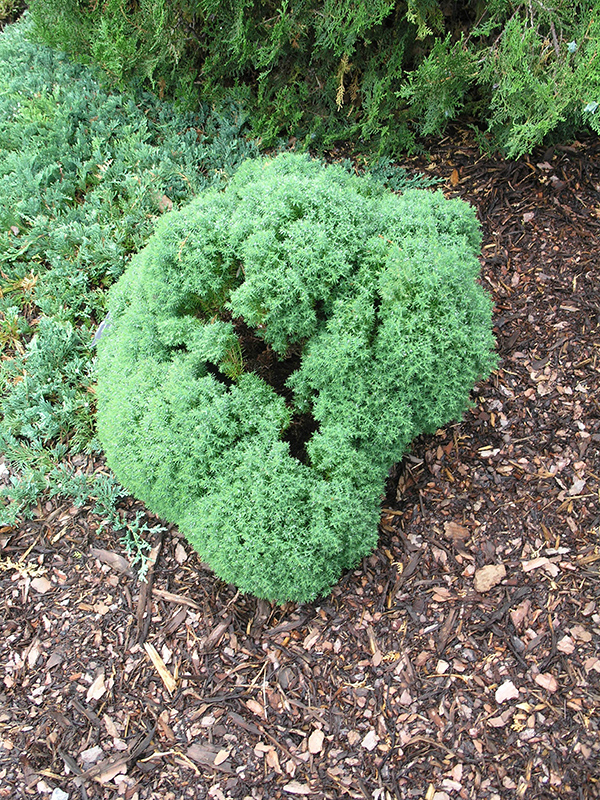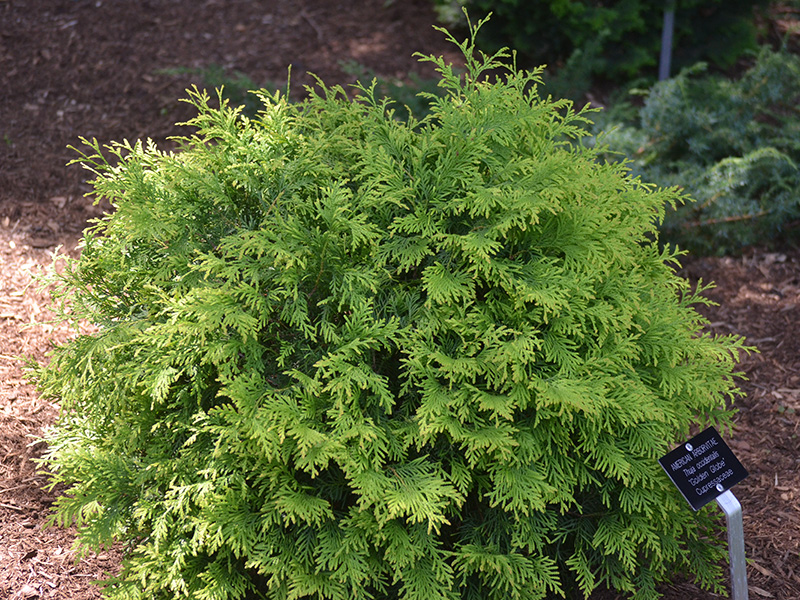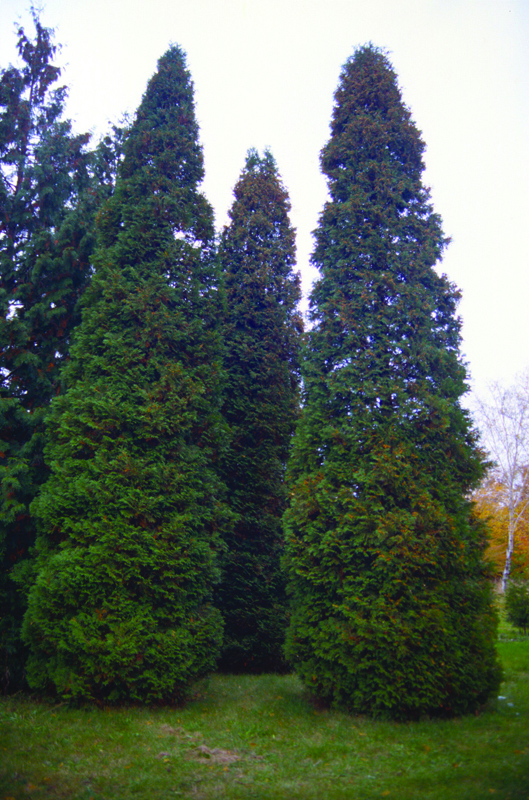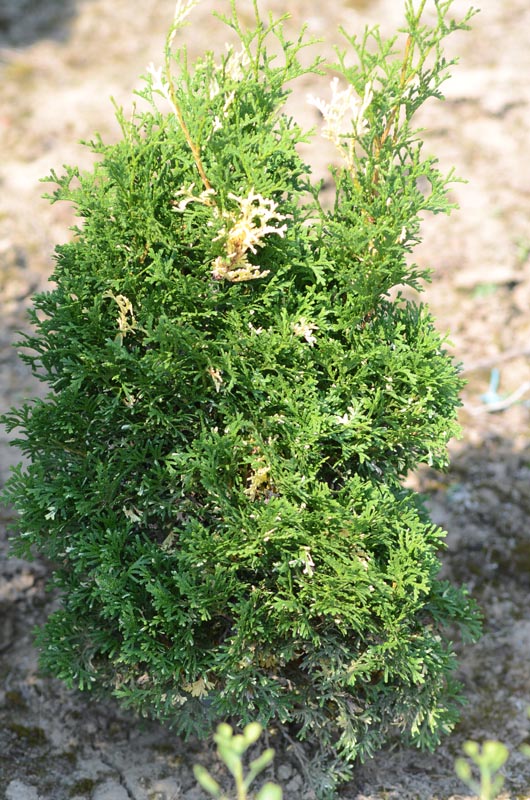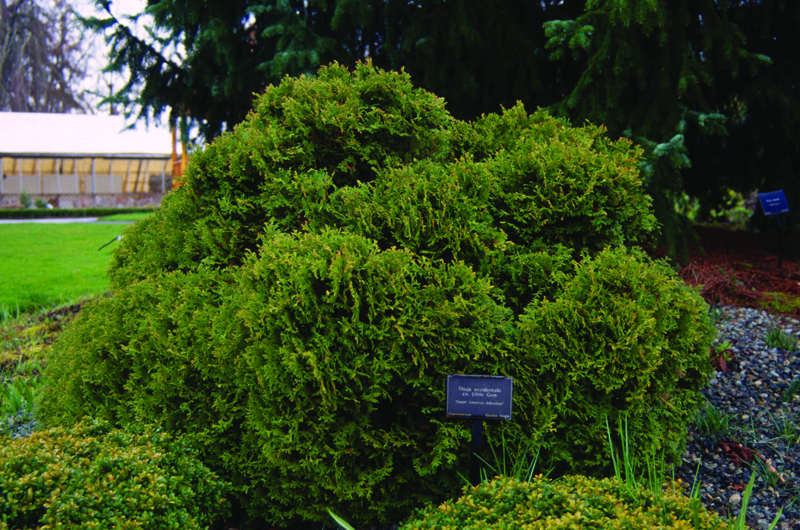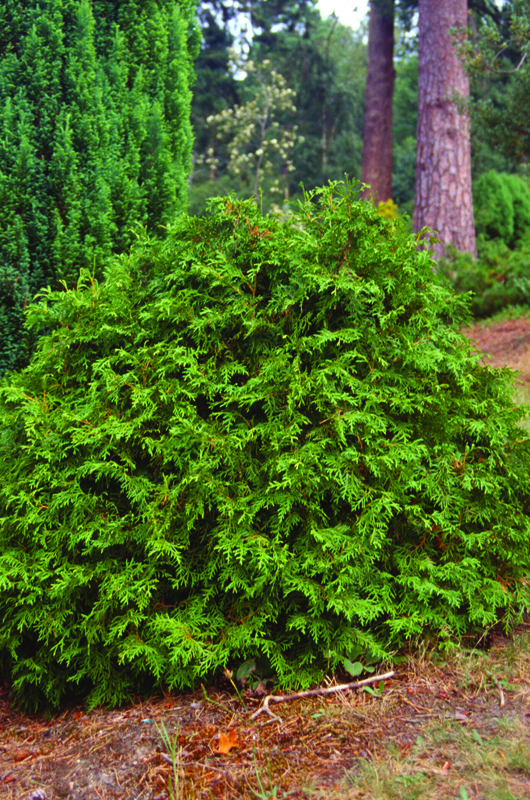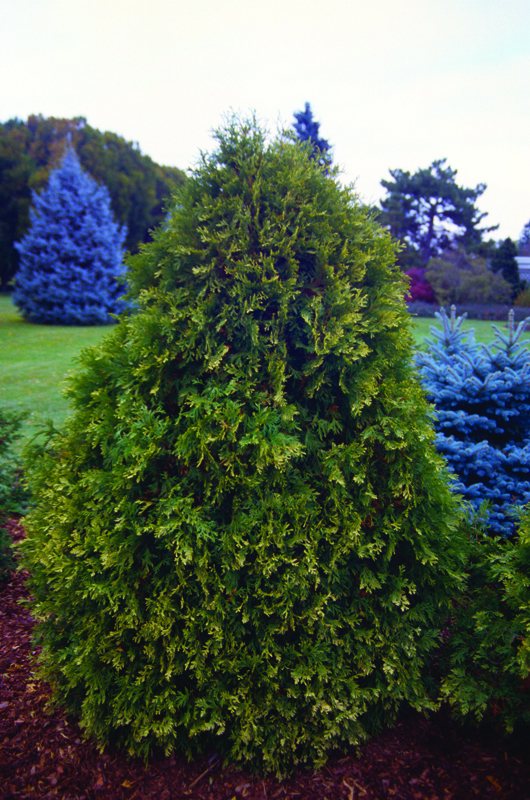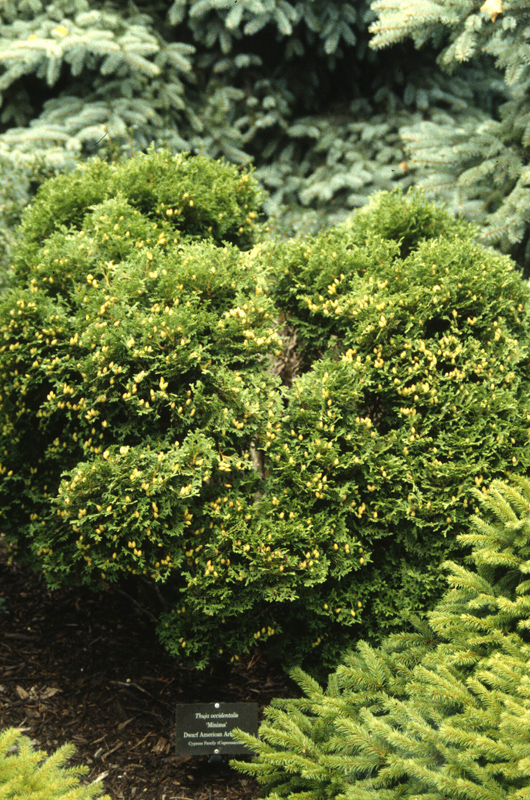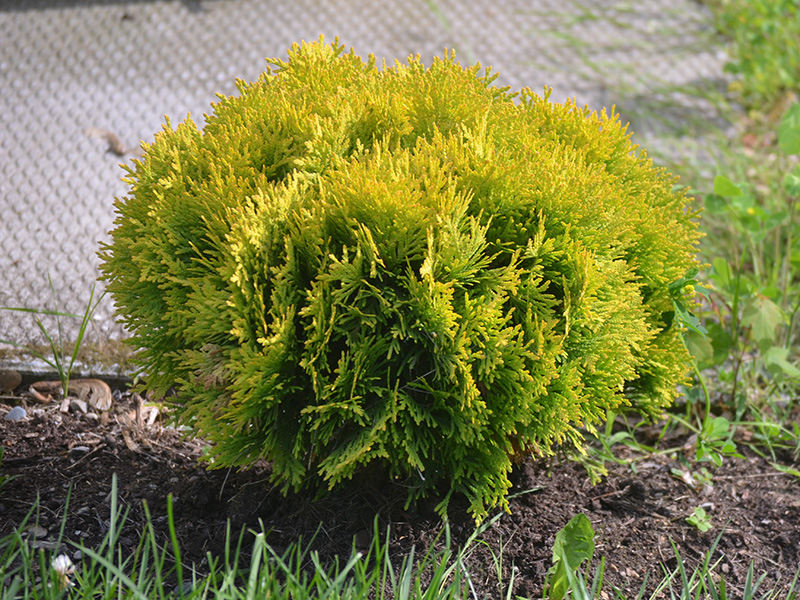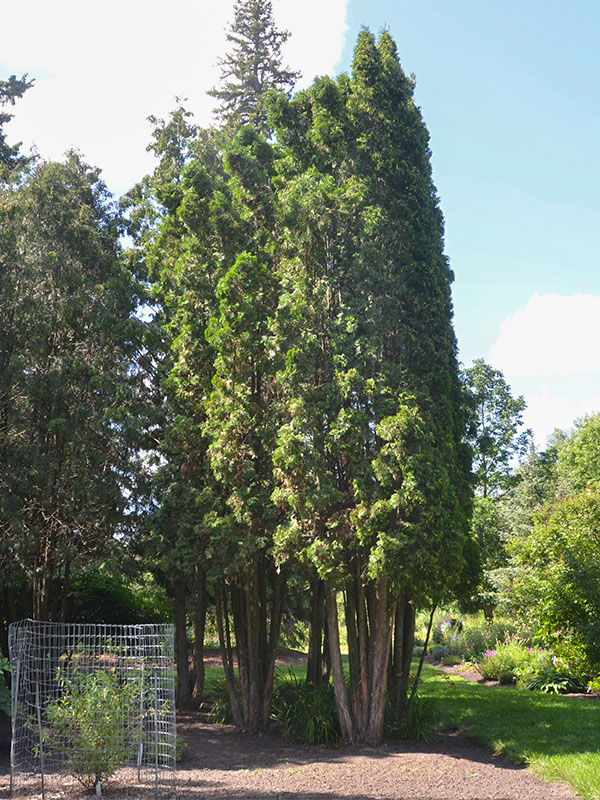
Woody > Thuja > Thuja occidentalis > Thuja occidentalis
Thuja occidentalis
Eastern White Cedar
Origin: It has been thriving in eastern Canada for centuries. It was introduced by the Europeans around 1550 when they took it back to France.
Mike's
Opinion


"
We are fortunate that we live in an area where this plant is native. It is a perfect plant to use in natural landscapes, as a large windbreak or even as a large pruned hedge. A great plant for wildlife habitat especially the Cedar Waxwing.
Michael Pascoe, NDP., ODH., CLT., MSc. (Plant Conservation)
"
| Family |
| Cupressaceae |
| Genus |
| Thuja |
| Species |
| occidentalis |
| Category |
| Woody |
| Type |
| Tree (evergreen) |
| Pronunciation |
| USDA Hardiness Zone |
| 3 - 7 |
| Canadian Hardiness Zone |
| 1a - 7a |
| RHS Hardiness Zone |
| H7- H5 |
| Temperature (°C) |
| (-37) - (-12) |
| Temperature (°F) |
| (-35) - 10 |
| Height |
| 10 - 20 m |
| Spread |
| 5 m |
Photographs
Description and Growing Information
Flowering Period
| General Description |
| The leaves are scale like, with a strong smell when rubbed or broken off. They are hardy in zones 3-7 but are not vigorous further south. It bares cones averaging from 0.5 - 1 cm long. |
| Landscape |
| Used as hedging, either formal or informal. Useful as a species in habitat restoration and shelter belt development. |
| Cultivation |
| Grows well in swampy conditions, in moist well drained acidic or alkaline soils. It can live up to 300 years as trees found on the cliffs of the Niagara Escarpment attest. |
| Shape |
| It is dense, pyramidal and has flat fan shaped branching. |
| Growth |
| Slow |
| ID Characteristic |
| It is about 10 - 20 m tall with very aromatic leaves if rubbed. They prefer sun and moist well drained soils, either acidic or alkaline but are very tolerant of wet and drier soils. It has monoecious flowers and flat bright green leaves. |
| Pests |
| The white cedar might be prone to bagworm, heart rot, leaf miner, spider mites and deer browsing. |
| Habitat |
| Grows well and thrives in swampy soils. It is found from Nova Scotia to Manitoba and south to Tennessee. |
| Bark/Stem Description |
| The bark colour varies from a greyish-brown to a reddish-brown. The bark forms a close bond of connecting ridges and shallow grooves. It is usually greyish on the outside. |
| Leaf Description |
| Leaves are flat, bright green in summer, turning a little yellowy-brown green in the winter. They are scale like abruptly pointed, bright green on the top and a pale green on the underside. |
| Flower Description |
| The plants are monoecious, with the flowers terminal and solitary. |
| Fruit Description |
| The fruit is a cone that ranges from 30 mm to 1.5 cm in length. They are a light brown, with 8 - 10 scales. The seeds are 2 mm long, compressed, with a wing around the seed, it is narrow and emarginate. Seed are often consumed by the Cedar Waxwing. |
| Colour Description |
| It is a bright green on top of the leaf and a pale green on the bottom in the summer. In the winter the colour becomes more pale and more yellow-brown. |
| Texture Description |
| The texture is a medium to fine. The bark is not rigid, it is smooth and fine. |
| Notable Specimens |
| The Gardens of Fanshawe College, London, Ontario, Canada. Throughout the province of Ontario in rural settings especially along the Bruce Peninsula Trail, Ontario, Canada, where some of the oldest trees in Canada are to be found on the face of the Niagara Escarpment a world biosphere reserve. |
| Propagation |
| Cuttings are taken from current years wood. It is taken with the heel and roots well when taken in November through March. Cuttings taken in January root a little quicker. |
| Ethnobotanical Uses (Disclaimer) |
| The Natives used them to make their canoes. It is now used more for shingles, boxes and posts since the wood contains high tannin levels and is somewhat resistant to rot. The foliage has high vitamin C levels and was used to treat scurvy in the past. |
